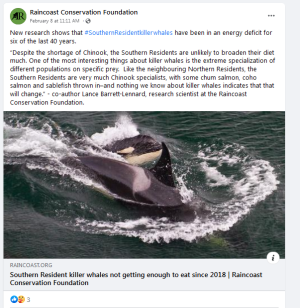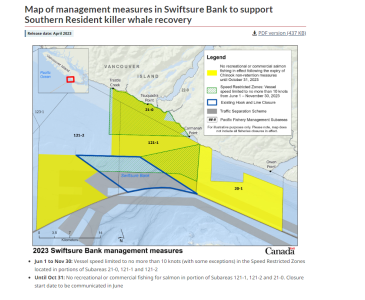open after I downloaded the pdf file...
good info thanks for posting
Important portions of the above study
Based on this study, we suggest that the areas chosen off North Pender and Saturna Islands do
not have the highest impact potential for protection of SRKW foraging grounds in their summer
core habitat area. While there has been some evidence that foraging occurs at a low rate off
Pender Island (Scott-Hayward et al., 2015; Ashe et al., 2010), no such evidence exists in the
literature around Saturna Island. In recent years (2017-2022) there has been no evidence of
foraging behavior around either of these two sites (Orca Behavior Institute, unpublished data).
Similarly to the Robson Bight (Michael Bigg) Ecological Reserve (RBMBER), the Pender and
Saturna Island ISZs are extremely small (Pender Island ISZ is ~8.5km2 and Saturna Island ISZ
is ~3.35km2 ). Unlike the RBMBER, which has specific cultural significance in its relatively small
area, the two Gulf Island ISZs do not reflect the foraging ecology of SRKW, which involves
spreading out up to 10km2 and actively foraging for up to 2-3 hours (Wiles, 2004). This study
provides evidence that the Pender and Saturna ISZs are not the best available candidates for
the purpose that they were originally intended in “reducing acoustic and physical disturbance
from vessels in key portions of Southern Resident killer whale foraging areas” (Department of
Fisheries and Oceans Canada, 2022)
Conclusion:
According to this study the Pender and Saturna Island ISZs are not the best available
candidates for the purpose that they were originally intended. Their sizes are too small to be
relevant to the foraging ecology of SRKW and their geographic positioning are not in areas that
the literature cites as highly valuable for foraging. This study has also found that these areas are
not among the top 10% of areas that SRKW spend their time in during the ISZ enforcement
period (June-November






